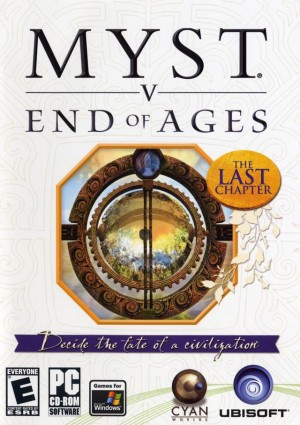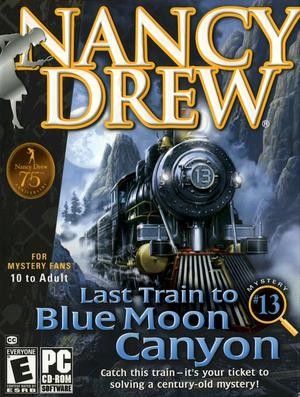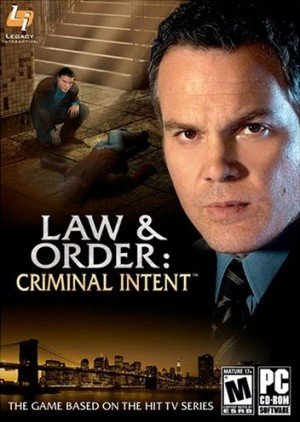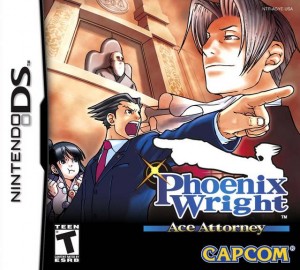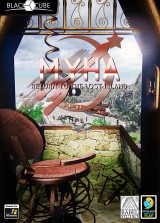Review for Dark Fall: Lost Souls
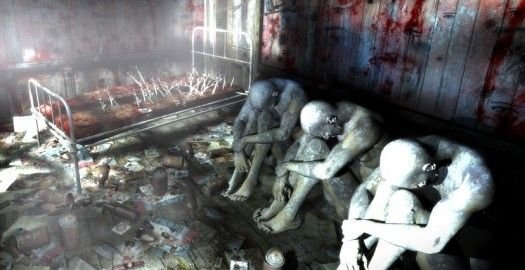
The original Dark Fall was one of the nicest surprises of 2002. A low-budget game produced almost singlehandedly by a first-time developer, only picked up by publishers after seeing its independent success, Dark Fall was a neat little package. It told the story of an anonymous protagonist exploring the abandoned, skeletal remains of a haunted WWII-era train station in Dowerton, England. The design was occasionally rough and the graphics looked several years out of date, but Jonathan Boakes’ passion for the world he was creating came through in every aspect. The puzzles were clever and the plot was intriguing, but what really drew players in was the rich, foreboding atmosphere that captured an authentic sense of place superbly. And the game was scary, a testament to the power of a deft artistic vision over fancy graphics.
Dark Fall II: Lights Out followed soon after, abandoning the train station for a science fiction-tinged tale of a haunted lighthouse in a game that lacked some of the magic of the original. But now Boakes has returned to Dowerton in the series finale with Dark Fall: Lost Souls. This story stands alone from the rest of the series, tethered only by the shared location and a few references that will put a smile on the faces of devoted fans. New players will have no trouble slipping right into the game’s tale of a disgraced police inspector searching for a missing girl named Amy, who disappeared five years earlier. As you discover early on, The Inspector (the only name we’re given) was caught manipulating evidence to “prove” the guilt of his prime suspect and was fired from the job. Still hoping to clear both his name and conscience, he goes to look for Amy near the place she vanished, which of course brings him to the Dowerton station.
The decision to return to the original setting could have backfired; part of the joy of the first game was exploring the station and unraveling its mysteries, and going back over the same territory seemed unlikely to provide the same novelty or sense of fascination and discovery. It is a credit to Boakes’ imagination and skill as a designer that this is not the case – the old station still feels fresh and untamed. The architecture will be familiar to returning players, but it’s clear that a lot has happened in the period between games. Weeds have overtaken previously clear paths, and entire rooms have collapsed, now lying in ruin. And something is definitely amiss: Dowerton Station has gone from spooky to downright disturbing. The first Dark Fall had creepy sound effects and the occasional disconcerting graffiti on the wall, but Lost Souls has rooms full of mannequins in the fetal position just outside the range of your flashlight, hallways decorated with syringes and scissors stabbed into the walls, and ghosts that actively stalk the halls, flashing in and out of view.
All this makes the game much more surreal and visceral, likely to make you jump out of your seat during key moments of its ever-present tension. If that’s your bag, you’re in for a treat. Each time you enter one of the guest rooms in the hotel for the first time, you’ll hold your breath as you click to go in. What horrifying sights will greet your flashlight in this room? Or worse, will you be attacked by the Dark Fall entity itself? The halls take on a new, foreboding malevolence this time, because where the horror was mostly in the past during the first game, it is now here, and it’s after you. Boakes is a master at manipulating the player and scaring the crap out of them. Even though actual moments of danger are few and far between, the game makes sure you can never be quite certain when you’re safe and when you’re not. As a result, Lost Souls is by far the scariest point-and-click game I’ve ever played.
It doesn’t hurt that the production values are worlds beyond the original’s. With a modern engine that uses 360-degree panoramic environments and vastly improved background art, the train station really comes to life. The graphics, while still mostly static images, run at a higher resolution and are significantly more detailed. The textures are rich and show an authentic wear and tear – the floors are littered with trash, and the walls are cracked and water-stained. Atmospheric effects add to the sense of depth, such as motes of dust floating through the air, catching the moonlight. It’s all gorgeous – in an appropriately bleak, ominous way – and very immersive.
The sound design in the series has always been excellent, and here Boakes is at the top of his game. The ambient effects, from creaking doors to ghostly whispers to eerily jolly big band music playing through static on the radio, are all top-notch and really ratchet up the tension, keeping you spooked even when nothing is happening on-screen. Also nice is the recycling of a few of the more memorable sound effects from the first game, such as the quiet, dissonant burst of violin that suggests the presence of the Dark Fall, helping to tie the games together aesthetically. The voice acting isn’t quite as successful, with some characters falling flat (The Inspector himself is the most egregious example) and many lines recycled to the point of being obvious and annoying. Thankfully, there isn’t much dialogue overall, so it really doesn’t sting too badly.
Players guide The Inspector with typical first-person point-and-click controls. The cursor will point off-screen or into the background when movement is possible, indicate hotspots where items can be picked up or used, and show scenes that allow a closer, detailed view of something. There is no free-form camera panning, but hotspots at the edges of the screen rotate the view smoothly by 90 degrees, rather than the abrupt and often disorienting camera cuts in the previous games. This means that keeping your bearings is easier than in the past, so you won’t find yourself wondering which side of the room you’re looking at anymore.
As nice as that is, it also means that navigation is slower than in the previous entries – turning can take a couple of seconds instead of instantly changing, and while that doesn’t sound too bad, it adds up, especially when the game has you traipsing through areas you’ve already explored several times. The station’s scope is too small for an instant travel method between areas, but a way to skip the turning animation might have been nice for when you just want to get somewhere quickly. The layout doesn’t help, as navigation is often arbitrarily hampered. For example, the main station platform, which is something of a hub for all the areas in the game, is littered with debris and other obstacles, meaning that the path from one door to another five feet down might require five or six movements instead of one or two. The inconvenience is acceptable since the game world is so absorbing, but it can get tiresome over time. I should also mention that every once in a while you’ll come across hotspots that are much bigger than they should be, and occasionally these will bump right up to the screen-edge hotspots, which can be confusing. Not a deal-breaker by any means, but a periodic source of frustration.
On the whole, Lost Souls is easier than its predecessors, but only because of its linearity. In previous games, you might be juggling four or five puzzles at once, not to mention a page full of notes that may or may not be relevant. Here, the puzzles are more clustered – you might have to tackle a couple of puzzles on one floor of the hotel to open the next floor and its challenges. An anonymous messenger sends you vague text messages that guide you from one activity to the next, meaning there is less time spent wandering around trying to figure out what to do and more time spent trying to figure out how to do it. The puzzles themselves are familiar: deciphering the information from one source and translating it into a numerical or graphic code in order to open a box or door, finding and collecting various pieces of an item in hidden places, etc. Some of the puzzles are questionably integrated into the world (searching a room full of bio-luminescent cocoons for one containing a doorknob comes to mind), but for the most part the challenges fit the environment well, involving train station call letters, Ouija boards, and fuse boxes.
A few puzzles are timed, but these are handled well, transforming the time limit into a source of intense anxiety and dread (the good kind). One memorable instance involves repairing a television set while, in your peripheral vision, flickering lights reveal an approaching phantom – one who doesn’t look happy to see you. The puzzle’s goal is clear, so beating the time limit is simply a matter of solving it quickly enough, which is fairly easy to do, though perhaps not the first time. Since failure simply means starting the puzzle over, however, the impending threat is enough to get you sweating without driving you insane with frustration.
This kind of emotional connection is part of an increased emphasis on first-person immersion in Lost Souls. The protagonist never really makes an impression himself, but the game does an excellent job of putting you in his shoes. The perspective shifts and wobbles as you turn around in a room, climb a ladder, or recover from a particularly disturbing encounter. When walking around outside, puffs of breath will rise from the bottom of the screen, accompanied by the shivering breathing of The Inspector. In the same vein, some actions require you to move the mouse around the screen rather than simply click. For example, removing a piece of sheet metal from a barricaded window demands that you click on the sheet and then drag it off to the side. Such actions are subtle and usually intuitive, though there are times you will find yourself clicking and flailing the cursor around the screen, trying to find the correct direction to drag.
The Inspector isn’t the only element that fails to make much of an impression, unfortunately, as the story itself is mostly underwhelming. Dark Fall was a great example of minimalist storytelling, forcing players to assemble the narrative themselves, piece-by-piece, through news articles and journal entries, filling in the gaps with their imaginations. Lost Souls is far more direct in its approach, and the result is a mixed bag. It’s enough to keep you playing, but compared to the subtle, quiet excellence of the first game’s story, this yarn isn’t as effective. We never quite empathize with The Inspector’s plight, and Amy is just another in a long line of creepy little ghost girls who taunt the protagonist with rhymes and schoolyard games. Despite the fact that you see Amy as a ghost very early in the game, The Inspector continues to blindly chase after her, convinced that she is alive. The implication is that The Inspector is less than stable (the vodka and pills in your starting inventory contribute to this notion), but he comes off more as stubborn and incompetent.
Other characters don’t fare much better. True to the first game, the cast is mostly made up of ghostly hotel guests, though the manner of dealing with them is different this time. In Dark Fall, players explored a character’s room, piecing together their backstories from letters and personal artifacts without any actual interaction. This fit the game’s overall theme of discovering the forgotten history of a lonely, abandoned place. In Lost Souls you speak directly with the ghosts, diving into their memories and helping them overcome the baggage that is keeping them trapped in the hotel. Characters such as Matilda Fly, the failed actress, and Andrew Verney, the visiting astronomer, were introduced in the original only by their rooms, but here they make actual contact with the player. The exploration of each character’s painful past is fairly engaging, though the “healing” process (essentially picking the correct dialogue responses in succession) for each ghost is nonsensical and cumbersome, so the characters soon devolve into vehicles for plot progression rather than personal, tragic encounters, and that’s a shame.
In fact, it’s never clear why The Inspector is bothering to help these ghosts at all. The story is all over the place, with unclear goals that are never explained and rely on inane adventure gaming logic: you should carefully scrutinize the details in pictures scattered around the station… because this is an adventure game, so they’re probably important… just because. It’s clear when you are supposed to use the information, but you’ll have no idea why you are doing it. Other narrative weaknesses include plot elements that are introduced and promptly forgotten (soul-draining slugs? Huh?), major characters getting little screen time compared to minor ones that barely figure into the overall picture, and the presence of the Dark Fall itself barely being mentioned despite its importance to the station’s situation. One gets the sense that Boakes was trying so desperately to one-up his previous efforts that he forgot (or was unable) to make much of it cohesive. This may be less of a priority in a surreal, psychological horror story that operates with a certain dream-logic, but there’s a fine line between bizarre and haphazard. When a game does it right, it’s a thrill to piece all of the elements together after playing. In Lost Souls, when the climactic plot revelations come rapid-fire at the end, you’ll simply shrug for lack of investment.
Ultimately, though, none of the story issues kept me from fully enjoying Lost Souls. While it’s disappointing that the plot, for all its trying, falls short of its predecessor’s own standard, it never impedes the real reason you’re playing: the chilling pleasure of exploring the tragic, haunted Dowerton Station. As a series of carrots on a stick to keep you moving through the Station, the motivation works well enough, and I honestly didn’t miss having a greater involvement in the story. The aspects that matter most are the atmosphere, the sense of place and history, and the scares, and these remain intact and are even better than ever.
In the end, I walked away from the game satisfied. There are few designers in the industry today that can match Jonathan Boakes’ ability to conjure a location so fully and convincingly, populate it with texture and history, and then use it to scare the bejeezus out of you. The control enhancements still leave a few lingering navigation issues, but the added layer of polish does the game wonders, and Dowerton Station has never been more believable. The puzzles are solid, the mechanics are improved, and the haunting atmosphere will get under your skin. It won’t impress you with its story, but if you like an adventure that can send shivers down your spine as it flexes your brain, you owe it to yourself to check out Dark Fall: Lost Souls.
Our Verdict:
An improvement in many ways over previous entries, Lost Souls overcomes a sloppily-told story by upping the ante on terror and dread.



_capsule_fog__medium.png)









